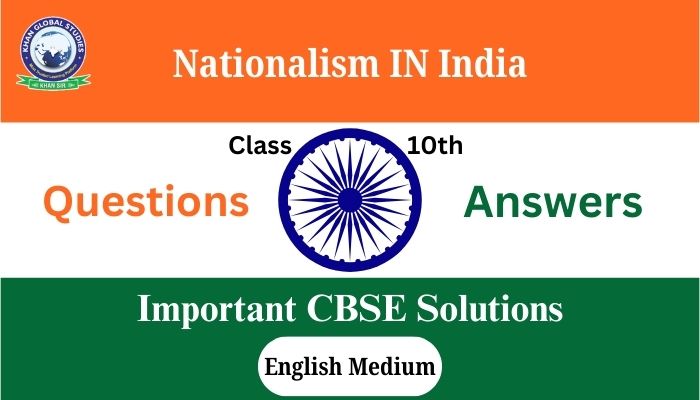Questions and Answers: Nationalism in India is a pivotal chapter in the history curriculum for Class 10 students, particularly in the CBSE syllabus. This chapter delves into the rise of nationalist movements against British colonial rule and highlights key events, figures, and ideologies that shaped India’s struggle for independence. Below, we provide a comprehensive overview of important questions and answers related to this topic, which will aid students in their exam preparations.
Understanding Nationalism in India
Nationalism refers to the ideological movement that seeks to promote the interests of a particular nation, often in opposition to colonial or foreign control. In India, this movement gained momentum during the late 19th and early 20th centuries as various social groups united against British rule. The chapter explores significant events such as the Non-Cooperation Movement, Civil Disobedience Movement, and the impact of World War I on Indian nationalism.
Key Questions and Answers
- What was the significance of the Swaraj Flag designed by Jawaharlal Nehru in 1921?
- The Swaraj Flag symbolized the Indian independence movement and was a representation of national pride and unity among Indians.
- Who were the founders of the Swaraj Party?
- The Swaraj Party was founded by leaders like C.R. Das and Motilal Nehru to promote self-rule within the framework of constitutional means.
- How did peasants in Uttar Pradesh respond to Gandhi’s call for Swaraj?
- Many peasants supported Gandhiji’s call as they hoped for relief from oppressive policies and better living conditions. They viewed Swaraj as a means to achieve economic independence.
- What were the causes of the Non-Cooperation Movement?
- Key causes included dissatisfaction with British policies, the Jallianwala Bagh Massacre, and widespread discontent among various social classes.
- Define Mahatma Gandhi’s concept of Non-Cooperation.
- Non-Cooperation was a form of passive resistance where Indians were urged to withdraw from British institutions and refuse cooperation with colonial authorities.
- Why did different classes participate in the Civil Disobedience Movement?
- Various social groups joined due to their unique grievances against British rule, including economic exploitation, cultural suppression, and political disenfranchisement.
- What were the economic impacts of the Non-Cooperation Movement?
- The movement led to boycotts of British goods, which significantly affected British industries and promoted indigenous products.
- Explain why people interpreted ‘Swaraj’ differently.
- Different social groups had varied aspirations; for some, it meant political freedom, while for others it encompassed social justice or economic independence.
- What was the Rowlatt Act, and why did it provoke outrage?
- The Rowlatt Act allowed for detention without trial, leading to widespread anger as it was seen as a violation of civil liberties.
- Discuss the Salt March and its significance.
- The Salt March in 1930 was a pivotal act of civil disobedience against British salt laws, symbolizing resistance against colonial oppression and uniting Indians across different regions.
- How did World War I influence Indian nationalism?
- The war exacerbated economic hardships due to increased taxation and food shortages, leading to heightened political awareness and mobilization against colonial rule.
- Describe the main features of the Poona Pact.
- The Poona Pact was an agreement between Hindu leaders and Dr. B.R. Ambedkar provided reserved seats for Dalits in legislative councils while ensuring they would be elected by Hindus.
Conclusion
The chapter on Nationalism in India is crucial for understanding how diverse groups within Indian society came together to fight against colonial rule through various movements led by influential leaders like Mahatma Gandhi. By studying these questions and answers, students can gain a deeper insight into India’s struggle for independence and prepare effectively for their exams.
This comprehensive overview not only aids students in grasping key concepts but also enhances their ability to articulate their understanding during assessments. For further study, students are encouraged to engage with additional resources such as textbooks, online notes, and past examination papers to reinforce their learning experience.



